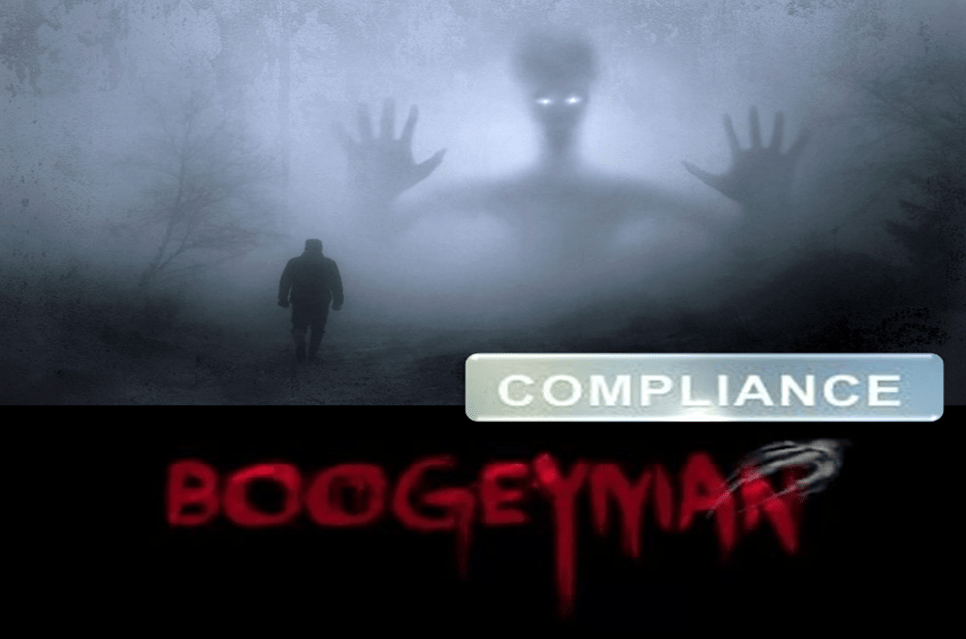Compliance is Not the “Bogeyman”
By Theon Alleyne, CRCP, CCEP , USA Senior Managing Consultant,IBM
A senior relationship manager at a US bank in Hong Kong, complained In an article: “Compliance is ruining my world”.
My colleagues and I have heard similar statements in the past. Healthcare professionals argue that HIPAA is affecting their business and that they are swamped with useless paperwork and patient forms.
Nonprofit champions say that the costs of complying with federal, state, or local rules drain much-needed financial resources away from the core mission. In fact, customer-facing professionals in many industries may share the same point of view.
Thomas Cheong’s (not the real name) reasoned position is based in part on a few facts,
(a) He spends a lot of time dealing with client compliance issues;
(b) the frequency of client due diligence updates increased;
(c) client onboarding takes months rather than days; and
(d) compliance activities affect the pursuit of the core mission.
From a compliance perspective, the actions required of Mr. Cheong are the effects of regulatory sanctions that were caused by the wrongdoing of others.
“Compliance is not the Bogeyman; Compliance is in place to protect you, your customers, and your company from the Bogeyman.”
In a meeting with compliance professionals, Pekka Dare, Director ICT Academic Faculty noted that in financial services, the global trend has shifted the primary KYC compliance responsibility to the front office, where the client relationship is owned. As a private banker, it is essential to understand the source of wealth of new or existing clients. It is equally important to know about your customer’s customer.
For example, a private banker may have a Jeweler as an existing customer for four years that was subject to due diligence reviews at onboarding and in year three. In year four, the Jeweler established a new diamond supplier relationship. The identity and location of the new diamond supplier could become an AML concern for the bank.
FATF reports, including the FATF/ Egmont 2013 report notes “diamond and diamond trades can be used in all the stages of money laundering and terrorist financing”. If the Jeweler was a new customer with a supplier of concern, it may take months to complete the verifications to complete the onboarding process. The alternative would be for Mr. Cheong and his manager(s) to complete written risk acceptance documents to take on the new business.
Onboarding clients without completing a due diligence review rips away the compliance mechanism in place to protect the employee and the bank.
There are different methodologies that can be used to streamline processes to allow customer-facing professionals to complete compliance tasks with minimal impact on the operations. The development and integration of the methodologies and tools require the skills of compliance professionals with a deep understanding of the issues, with knowledge and insights to provide best in class solutions.
For financial services entities, the key to overcoming the perception that compliance is a burden is rethinking the customer onboarding process, which has become unduly burdensome to the customer.
𝙍𝙚𝙩𝙝𝙞𝙣𝙠𝙞𝙣𝙜 𝘾𝙪𝙨𝙩𝙤𝙢𝙚𝙧 𝙊𝙣𝙗𝙤𝙖𝙧𝙙𝙞𝙣𝙜
In many jurisdictions, it is remarkable that customers who comply with published banking requirements experience onboarding delays.
Why?
Someone determined that a process flow with multiple roadblocks, hidden land mines, and non-risk mitigation checkpoints was effective. Generally, this happens because legacy processes are maintained and added to new FATF based Standard Operating Procedures (SOP).
Often, the need to implement an SOP takes precedence over the general effectiveness and customer experience resulting from the SOP.
Over time, the slow process became the way business is done, and these practices become entrenched in institutions and societies.
Countries with slow banking onboarding practices are often in the bottom quartile of the World Bank “Ease of doing business” report.
What if the onboarding process could be redesigned to mitigate KYC, AML, and Fraud risk, and result in an empirical, Red, Amber, or Green account opening decision?
In some cities, the Pandemic resulted in a reduction in the time to onboard a customer through digital transformation. For others, the process takes much longer which is unacceptable.
The elimination of the “come back tomorrow, and we will call you when we are ready culture” is an easy first step to improve traditional banking.
- Phishing is not done at sea - April 13, 2023
- No Username or Password… No Wishes! - April 13, 2023
- Compliance is Not the “Bogeyman” - January 28, 2021


Stay connected